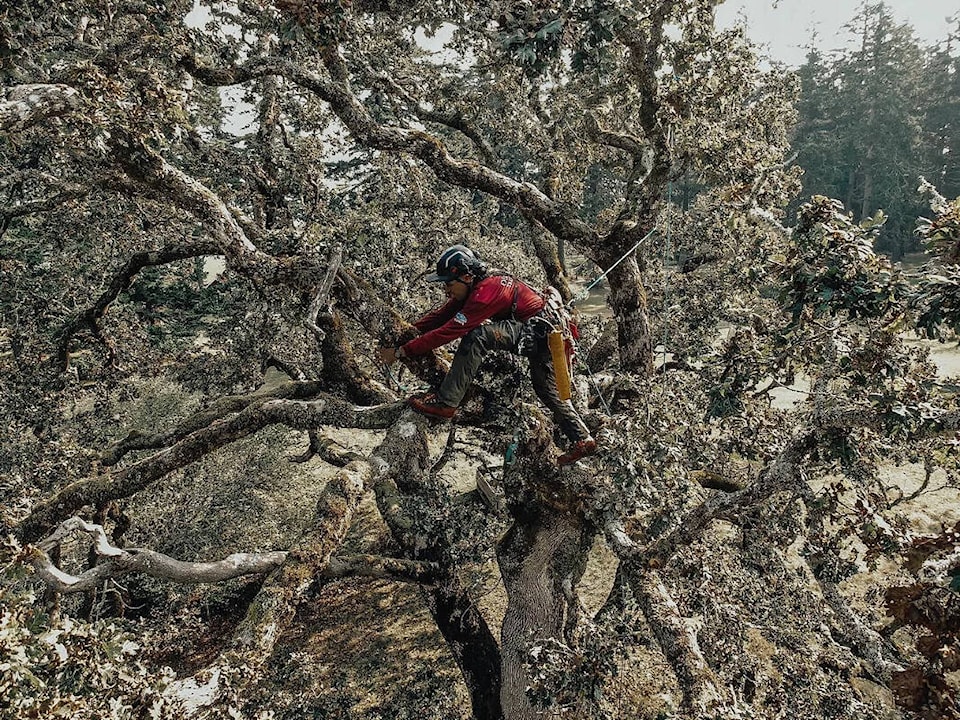As the signs of spring begin to unfurl across Victoria, the practice of pruning and tree care takes centre stage. With climate change nudging the seasons out of their traditional rhythms, trees are blooming earlier, presenting a series of challenges for arborists and gardeners alike.
“Spring is a time of renewal for trees, but it also brings the challenge of deciding when and how to prune,” explains Jared Witt, owner of Osprey Tree Service in Victoria’s West Shore.
The process, intended to encourage growth, must be timed with precision to avoid harming the trees. Signs of spring, such as budding leaves and flowering branches, can vary across species, making the timing of pruning crucial for the health of Vancouver Island’s diverse arboreal population.
This season, spring seems to be coming early. The effects of climate change become particularly evident, with trees blossoming sooner than expected. This shift poses risks to the trees’ well-being, complicating the traditional pruning calendar.
“Pruning in spring, ideally every six to eight weeks, can make hedges thicker and promote the growth of multiple new branches,” Witt notes, emphasizing the importance of careful shearing to avoid creating dead spots or holes.
The timing of pruning plays a vital role in a tree’s life cycle. “Spring pruning is usually done to promote growth, tapping into the tree’s highest annual growth hormone levels during spring,” he adds. Conversely, fall pruning focuses on shaping, as the hormonal activity in the branches is reduced.
Early spring, however, demands vigilance for signs of distress in trees, such as yellowing or redness in conifers, mushrooms or fungi indicating rot, and the ominous lean that suggests root instability. “These signs could threaten not just the tree’s health but also your property. It’s essential to consult an arborist if you notice any of these symptoms,” Witt advises.
The unpredictable weather patterns, a byproduct of climate change, also impact the timing of care practices like fertilization, especially for fruit trees vulnerable to winter bugs and moisture-induced rot. “The best time to plant new trees is now, before the heat intensifies. But be cautious with fertilizing too early; a return of cold weather can harm new growth, which isn’t an uncommon occurrence during March on the South Coast,” Witt cautions.
The dangers of an early spring are not to be underestimated. Tender new growth, coaxed out by warm temperatures, can succumb to a sudden cold snap, potentially setting back the tree’s development by a year. “It’s a tricky balance, especially with the erratic weather patterns we’re seeing. Sometimes experimentation with new planting techniques pays off, and sometimes it doesn’t,” he adds.
The question of when to prune, without causing damage, looms large for many. The best way to make sure you are pruning your specific species of tree to achieve the specific result you desire is to have an arborist come and look at it, and to make a plan that considers all factors with the homeowner.
To learn more, visit OspreyTreeService.ca or call 250-474-7993.
READ MORE:
Ask an Arborist: Why holly trees aren’t as jolly as they appear?
Ask an Arborist: How can I prepare my property for storm season?
